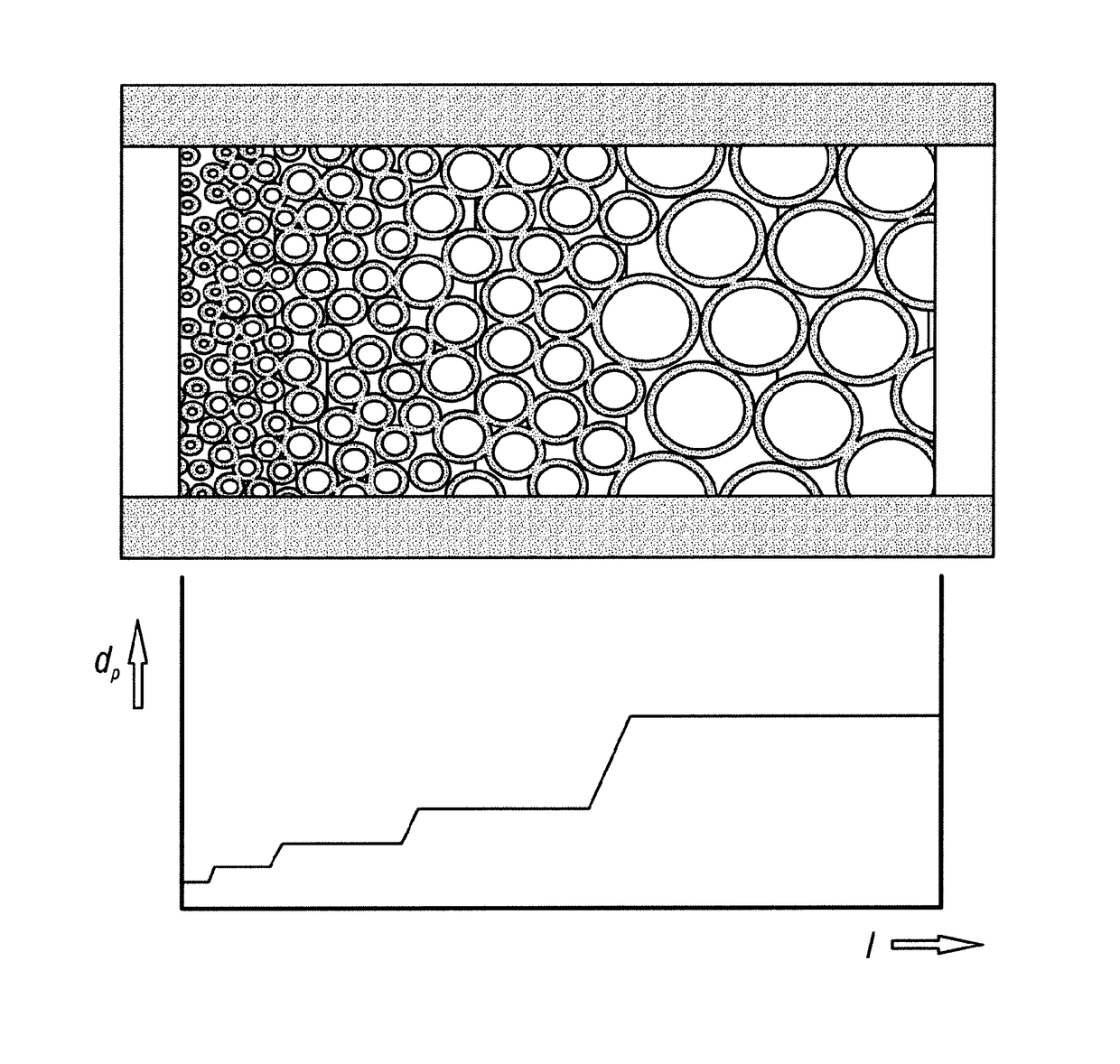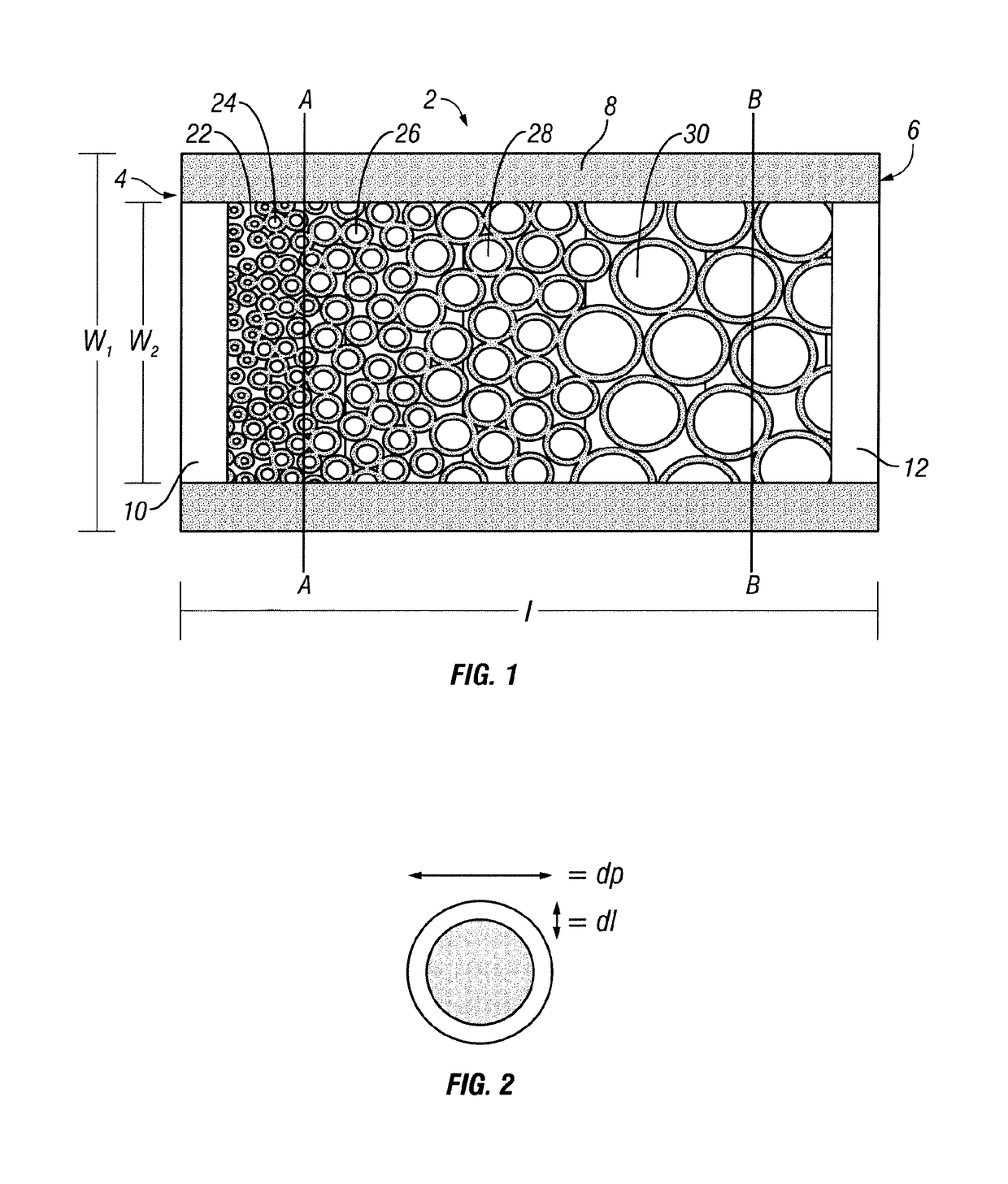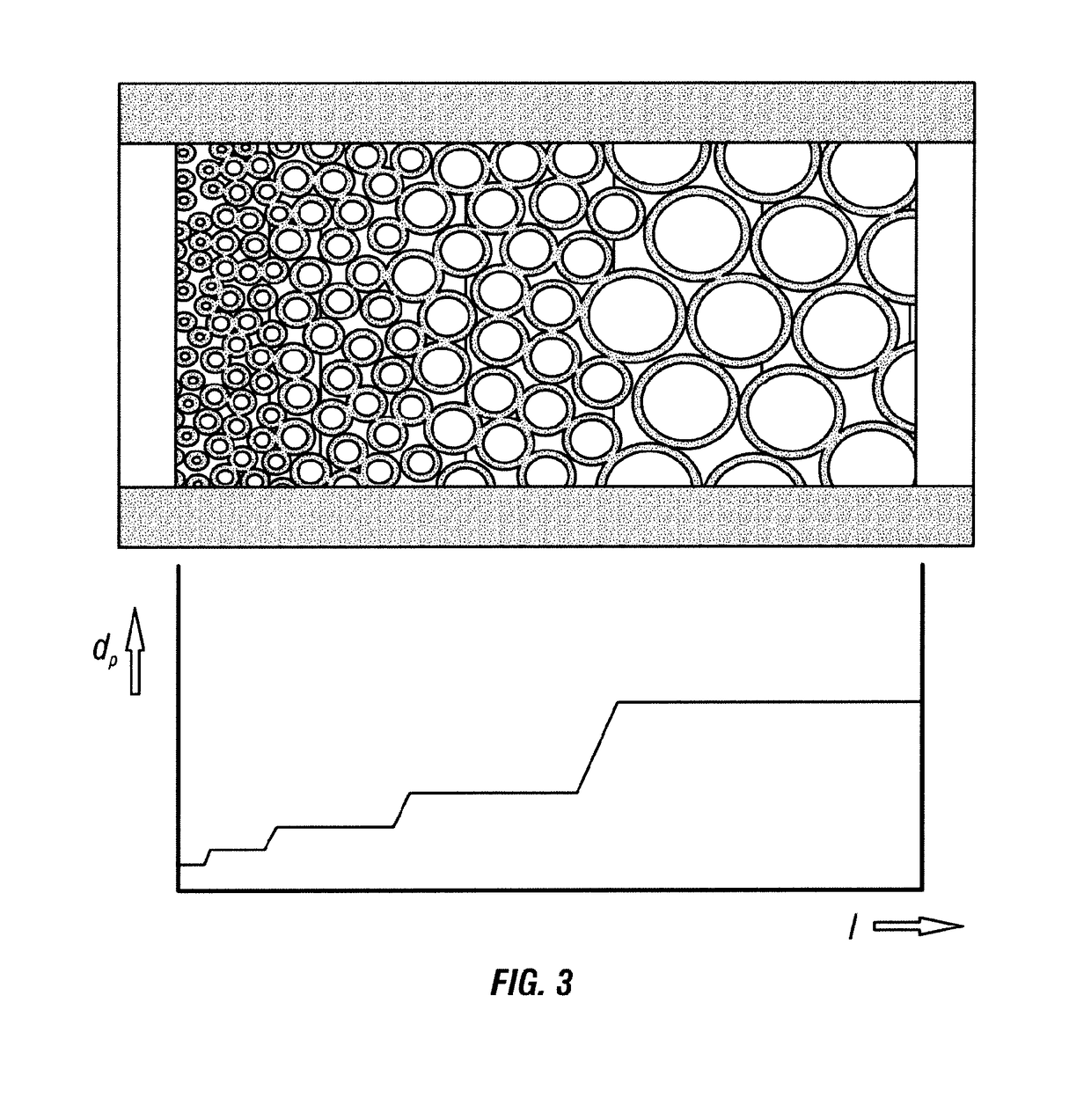Chromatography columns
a chromatography column and column technology, applied in the field of liquid chromatography, can solve the problems of increasing the cost and complexity of instruments, slow separation and broader retention time peaks, and low sample capacity of non-porous particles, so as to maintain the loadability of the column, reduce the pressure of the flow, and maintain the effect of chromatographic efficiency and resolution
- Summary
- Abstract
- Description
- Claims
- Application Information
AI Technical Summary
Benefits of technology
Problems solved by technology
Method used
Image
Examples
Embodiment Construction
[0044]In order to enable further understanding of the invention, but without limiting the scope thereof, various exemplary embodiments of the invention are now described with reference to the accompanying drawings.
[0045]Referring to FIG. 1, there is shown a schematic arrangement of a chromatography column (2) packed with a bed of particles in accordance with the present invention. The Figure shows a cross-sectional side view of the column, i.e. a section taken longitudinally along the length of the column. The column comprises a tube (8), commonly made of metal such as stainless steel for example. The column has a circular cross section in transverse cross section, orthogonal to the length e.g. in a section through line A-A or B-B. The column has a length, l, an outer tube diameter, w1, and an inner tube diameter, w2, as shown. The column may be an HPLC column made of steel and of circular section. However, it will be appreciated that column shapes, geometries and materials other th...
PUM
| Property | Measurement | Unit |
|---|---|---|
| thickness | aaaaa | aaaaa |
| diameter | aaaaa | aaaaa |
| diameter | aaaaa | aaaaa |
Abstract
Description
Claims
Application Information
 Login to View More
Login to View More - R&D
- Intellectual Property
- Life Sciences
- Materials
- Tech Scout
- Unparalleled Data Quality
- Higher Quality Content
- 60% Fewer Hallucinations
Browse by: Latest US Patents, China's latest patents, Technical Efficacy Thesaurus, Application Domain, Technology Topic, Popular Technical Reports.
© 2025 PatSnap. All rights reserved.Legal|Privacy policy|Modern Slavery Act Transparency Statement|Sitemap|About US| Contact US: help@patsnap.com



